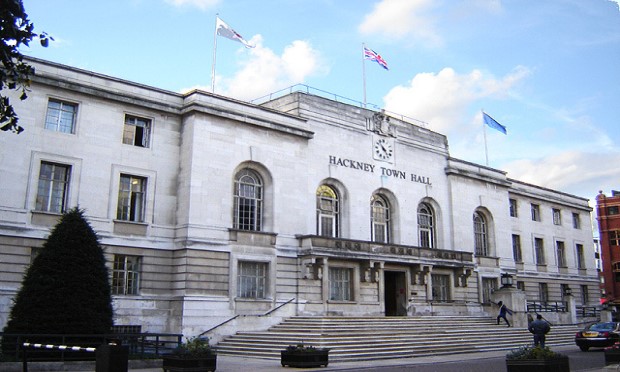Town Hall to seek public’s view on ‘child-friendly’ planning principles

The Town Hall is seeking residents’ views on the embedding of a number of child-friendly principles into the borough’s future development.
The eight Hackney-specific principles would seek to give children and young people a greater voice in how their neighbourhood changes, while designing out social exclusivity and focusing on health and wellbeing through greater contact with nature and a deprioritisation of space for the private car.
Cllr Caroline Woodley said: “This contributes to the manifesto commitment for Hackney to become a fully child-friendly borough, by maximising the opportunities for safe play and outdoor activities across our streets, estates, parks, adventure playgrounds, new developments and open spaces.
“Planning for a child-friendly built environment is a set of ideas concerned with shaping the physical features of neighbourhoods and cities, ensuring young people have an opportunity to become more active and visible in the daily life of parks and squares.
“This aims to expand children’s opportunities to have their views and experiences taken seriously by the development industry, and to sit alongside those involved in decision-making. Child-friendly design and planning needs to be considered at a strategic level at the start of any development process.
“The eight child-friendly principles for Hackney are all elements we’ve seen led and enacted by children in the first wave of the pandemic, as we saw our streets reopen and be reclaimed by children.”
The eight principles to be consulted upon read as follows:
● Shaping my borough: to ensure children and young people in
Hackney have the power to influence change in their Borough
● Doorstep play: to provide the opportunity for play and social
interactions immediately outside the front door
● Play on the way: to provide opportunities for informal play, things to do
and see around the neighbourhood beyond designated parks and
playgrounds
● People before cars: to ensure that children, young people and their
carers can move through Hackney safely by walking, cycling or public
transport
● Contact with nature: to build in opportunities for everyday access to
and connections with nature
● Places for all: to design socially inclusive and culturally sensitive
places that are accessible and safe for all children and young people to
enjoy together
● Making spaces children and young people want to be: to ensure
open spaces are designed to be vibrant, active and safe environments
where children and young people want to be
● Health and wellbeing: to ensure design of outdoor environments
contribute towards healthier foodscapes, reduced exposure to pollution
and improved physical and mental wellbeing.
If adopted by the council following consultation in the autumn, the borough’s child-friendly plans would aim for an “essential shift” in how professionals working in the built environment in Hackney think about developing cities for children, with the plans informed by a quote from Bogotá Mayor Enrique Peñalosa: “Children are a kind of indicator species. If we can build a successful city for children, we will have a successful city for all people.”
The plans would see the borough move firmly away from segregated playspaces by housing tenure, with the issue seeing local scrutiny after images emerged of a padlocked playground on the Pembury estate in August last year.
According to Woodley, who leads on special education needs and disabilities for the council, the new guidance would also have independent mobility for children at its heart, and if adopted would lead to child-friendliness being a material consideration when planning applications are determined.
The plans would also set out a child-friendly design standard, which would see developers posed with a series of questions to ensure child-friendly principles are being considered in plans, with the council attempting to tackle inadequate and unequal access to city space for its children and young people.
The principles were designed through workshops with the Hackney Youth Parliament, with the session aimed to equip the borough’s youth with confidence to recognise child-friendly design principles, in an attempt to make the young more central to policy making in the future.
If adopted, the supplementary planning document laying out the child friendly places work would expect residential buildings to have playable space directly outside main entrances, for shared outdoor space in residential schemes to be accessible to children of all housing tenures.
The acoustics of play spaces would also be expected to be “adequately considered” at a design’s early stages, in order that children could play without disturbing others, and physical barriers seeking to divide outdoor space between different types of housing would be avoided.
In an introduction to the report, planning chief Cllr Guy Nicholson wrote: “The Child-Friendly Places Supplementary Planning Document (SPD) contributes towards delivering the Mayor’s Manifesto commitment to ‘ensure that Hackney becomes a fully child-friendly borough’.
“It will achieve this objective by maximising the opportunities for safe play and outdoor activities across our streets, estates, parks, adventure playgrounds, new developments and open spaces as children and their families explore and discover the world around them.
“A child-friendly borough can be defined as a place that fulfills children’s
rights as citizens and ensures that their specific needs are met in
neighbourhoods and development. Planning for child-friendly built
environments is an evolving set of ideas concerned with shaping the physical features of neighbourhoods and cities.
“Ensuring that children and young people have an opportunity to become more active and visible in the daily life of urban public spaces such as streets, parks and squares. Moreover, built environment interventions and initiatives aim to expand children’s opportunities to have their views and experiences taken seriously by the development industry and those involved in decision-making.”
You can find the consultation here.
